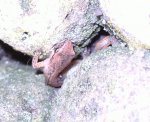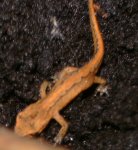I have recently rescued a salamander from a restaraunt kitchen, he(or she) was hiding in some spinach possibly imported from Israel. I have never kept newts or salamanders before so I was wandering if I had the tank set up right. I have put compost soil from a bag on the floor of the tank with a few branches and rocks. There is a small shallow dish of rain water in there and I have just bought some fruitfly lavae for him. I also keep the tank near a radiator, but not too close and it's turned down a bit. Is there anything important I am missing? He is just over an inch long and I was told it's a baby so do they need any special care?
Please help!
Jo
Please help!
Jo



